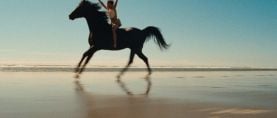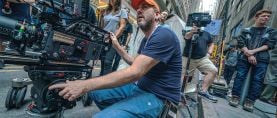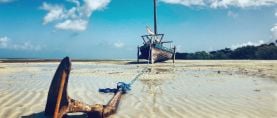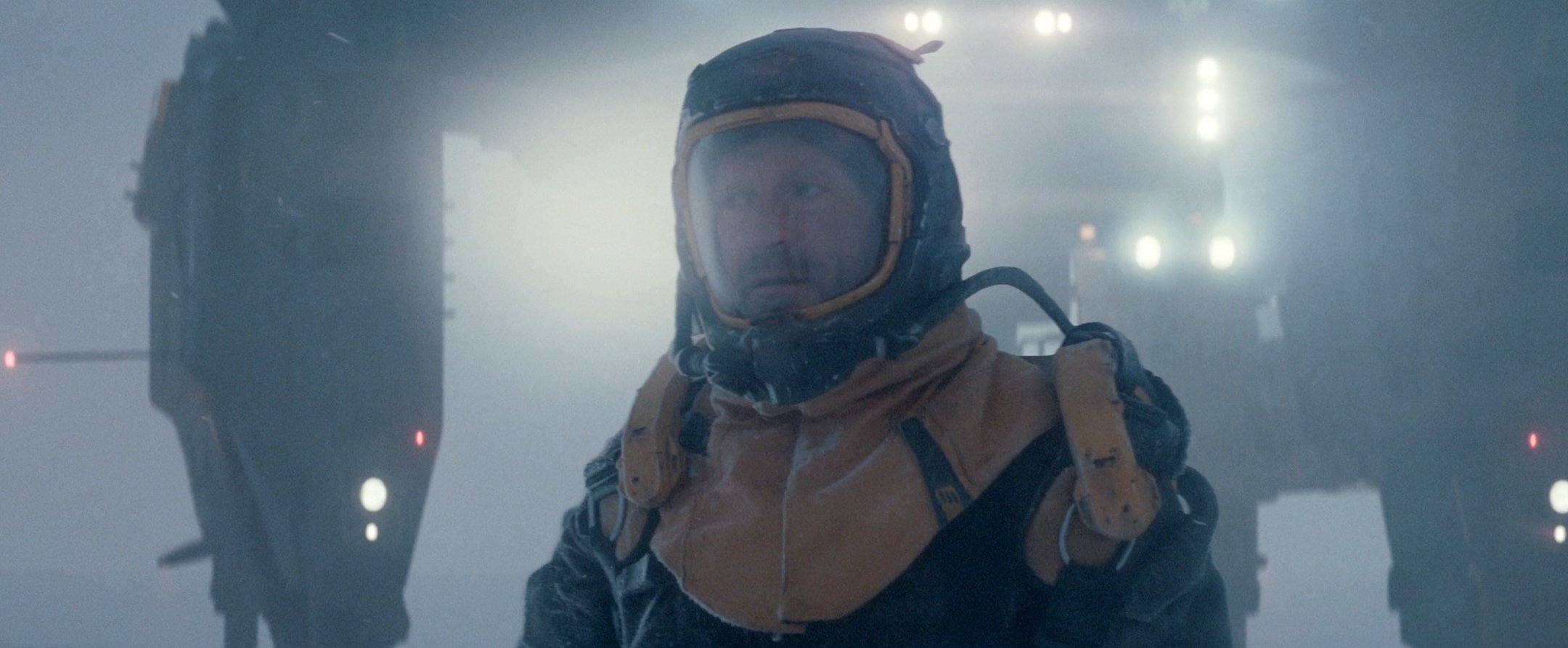
A Thousand Suns: Shooting Interplanetary Micro-Shorts
This ambitious web series explored a variety of creative production techniques to deliver impressive visuals on a budget.
All images courtesy of Blackmilk Studio
With a title borrowed from the Bhagavad Gita, the web anthology series A Thousand Suns entails an enigmatic microburst of science-fiction shorts. Six cryptic episodes — each with an average run time of less than five minutes — provides an amuse bouche of far-flung worlds, strange rites of passage, ferocious creatures and lost civilizations.
Produced through Blackmilk Studio, the series was the brainchild of Spanish-born cinematographer Miguel de Olaso, also known as MacGregor, in collaboration with Irish-born filmmaker Ruairi Robinson and a team of professional colleagues, including writer Philip Gelatt and directors Tyson Wade Johnson and Timothy Hyten. The self-financed episodes, produced on a shoestring, are big on spectacle, in part due to shooting on locations in Iceland, New Mexico, New York and California, complete with feature-quality cinematography, production design and visual effects.
MacGregor and Robinson’s orbits intersected on the DVXuser website and Reduser forum, which led to their first collaboration when Robinson recruited MacGregor to shoot his 2011 sci-fi short Blinky™.
“We’ve been friends for years now,” says Robinson. “We’ve worked together on commercials and done two short films. Then Mac came to me with this project, which he was producing and creatively driving. We’d worked together so much, it was a no-brainer for me to say, ‘Yes.’”
The Thousand Suns project was a creative detour from MacGregor’s cinematography career, which has so far included such docs as The Mauritania Railway: Backbone of the Sahara, features such as Fall, Kandahar and Vivarium, and a staple diet of music videos and television commercials. “I shoot 20 to 25 TV commercials a year,” says MacGregor. “That’s a lot of work. That’s always driven by the client, we’re paid to do that, and we’re happy to do that. But, at some point, you start to wonder, what would happen if the director of photography was in charge?”
“Red” — the first episode in the Suns shooting schedule — was one of the most ambitious, featuring an arid world in perpetual twilight that required “blue hour” photography that could only be done after the sun sank below the horizon. “That meant [each production day] had a roughly 16-minute shooting window,” MacGregor explains. “Well, a producer would never approve that because the crew would be waiting around all day before trying to shoot everything in 15 minutes. We thought, ‘Let’s try it. Let’s see what happens.’ And the project started there. What if we had the freedom to do what we wanted, without being told, ‘You can’t do that’?”
Each Suns episode offered a window into an imaginary world, told on an epic scale. “We wanted to do very short stories, but a bunch of them,” adds MacGregor. “Ruairi had a great quote about that. He said, we didn’t have $100 million to do the project, because we were self-financing, but we could make each short look like a couple of minutes from a $100-million movie.”
Diverse locations inspired a variety of tones. “We love movies that feel tactile that were shot in real places,” Robinson says. “We were using visual effects and CGI, but that was all designed to look as real as the locations where we were shooting. We wanted to find places that looked spectacular but were manageable. We shot ‘Ice’ and ‘Deal’ back-to-back in Iceland. That gave us different looks — lush greenery for ‘Deal’ and then frozen wasteland for ‘Ice’ in the same area, a week apart.”
MacGregor brainstormed stories with his team and planned logistics for an initial three-episode production schedule, following a Stateside shoot for “Red” with Icelandic locations representing a Japan-esque forest in “Deal” and a glacier location for a frozen planet in ‘Ice.’ While colleagues in Iceland helped organize locations, MacGregor recruited crew closer to home. “We brought cameras from L.A. and did our homework,” says MacGregor. “It was a small crew — actors, wardrobe, camera — using people who we’d worked with before. I’d say, ‘Hey, I'm going to Iceland next month to shoot something.’ The reaction was, ‘Dude, bring me over, don’t pay me, I’d love to do that!’”
Cinematographer Jon Baginski happened to be vacationing in Iceland at the time of the shoot. “Jon came in and did drone photography for us and photogrammetry,” notes Robinson. “It was friends and enthusiastic people that were excited to be involved in something that could look cool.”
As cinematographer for the series, MacGregor used Arri Alexa cameras and Panavision lenses. “Panavision was so helpful,” says MacGregor. “I shoot 99 percent of my projects on Panavision lenses and they were friendly enough to let us use my favorites, E Series anamorphics. It took a while to shoot [the entire series], and technology changed. The first shoot was Alexa SXT. The second and third were Alexa Mini because it was easier to travel to Iceland with a smaller camera. The next two were on Alexa Mini LF. The look is pretty consistent, although each film is very different.”
To capture the alien ceremony depicted in ‘Red,’ in which The Accused (Samantha Cornier) submits to The Sayer (Jay Villwock), MacGregor and his cast and crew visited White Sands National Park in New Mexico, using blue hour to simulate the light of a “tidally locked” planet. “In astronomy,” MacGregor explains, “there are planets out there that are tidally locked with their star. This means one side of the planet always looks toward its sun and is a desert, while the other side is dark and is an ice field. There is a narrow band between them in a perpetual twilight, where the temperature is not too hot and not too cold. We don’t have that situation on Earth [as our planet has a standard rotation], but we have that light for 15 to 20 minutes every day.”

MacGregor, Raluca Porumbacu and Ramses Alexandre created costumes resembling exotic silk robes to suggest a religious sect of unknown origins. “We did a lot of concept art to get the look right,” adds MacGregor. “I was captivated by the White Sands desert which was like a minimalistic canvas. We dressed characters in the opposite way, so they would stand out.” Cast and crew spent daylight hours rehearsing and then mobilized as the sun dipped below the horizon, pushing exposures to extremes. “Using the Alexa SXT, I didn’t want to go higher than 1000 ISO — it would be a lot easier now with Dual Native ISO cameras, and maybe would have allowed us another 10 minutes [of shooting time]. We shot in the autumn, so the days were not too short, not too long, but 16 and a half minutes was as much as we got each day. We had a two-day shoot with a few pickups on another day. I’ll be honest, I would not do that again! We averaged two takes per setup to capture 35 shots, so we had to move, and there was not much time to finesse. Fortunately, the actors were amazing, and Samantha nailed it on the first take.”
MacGregor used a ground-level helium-filled balloon light on location to create interactive lighting that visual effects artists later enhanced — along with adding distant architecture and a floating robot sentry — as the Accused reacts to her punishment by transforming into a vortex of swirling energy.
A very different mood is evoked in “Ice,” as a truculent spaceman (Lee Wakefield) descends into a blizzard to scout terraforming prospects on planet Kepler 22-b. The frozen Icelandic shooting location was as inhospitable as it appears on screen. “We shot on a glacier in a storm,” says Robinson. “I drove up in a special Caterpillar vehicle for driving on ice, and [our location] looked like the outpost from The Thing. It was incredible. And when we got there, it was whiteout conditions — we could have been anywhere! But we had this amazing light, and ice was forming for real on Lee’s spacesuit in every take, so it looked incredible in-camera. The rest we shot in various locations around Iceland.”
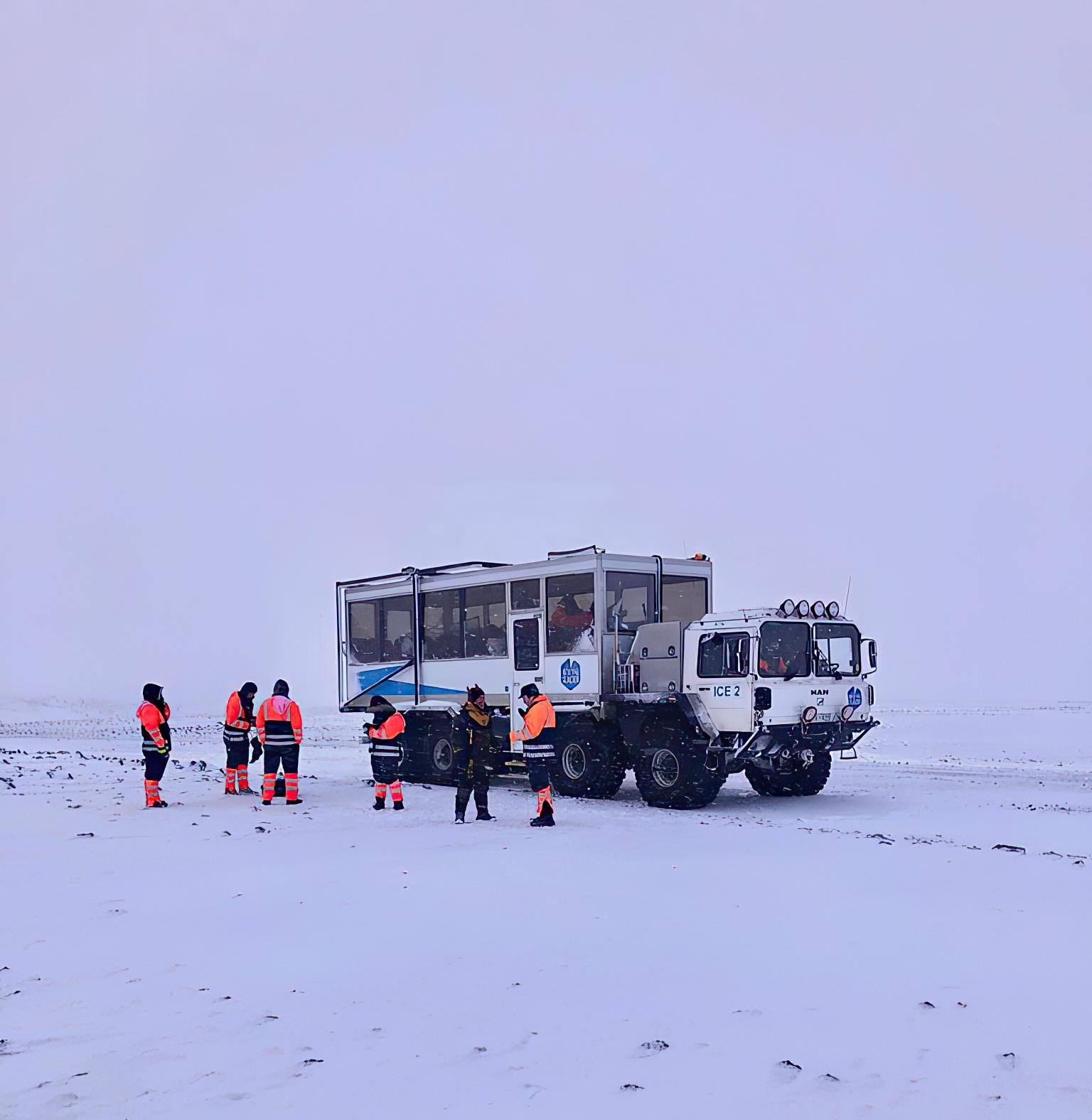
Robinson’s Kaiju Meat Company created visual effects to depict space vehicles and creatures that the prospector encounters on the frozen planet. The industrial-looking spacecraft was based on a conceptual design by Chinese artist Des Zhu, and the creature was based on a Lovecraftian rendering by artist Bryan Wynia, both of whom Robinson discovered online: “A lot of the design work in ‘Ice’ I found on ArtStation. That started an entirely new process, picking stuff that I already loved. And then we went in and built them in 3D.”
For visual effects, Robinson apportioned sculptural and rigging work to digital artists to whom he apportioned specialized tasks, and then he previsualized shots and handled rendering, lighting and composites.
The process began before the Iceland shoot with the creation of the prospector’s spacesuit. After actor Lee Wakefield first attended a full-body scanning session in London, 3D modeler Andrew Lee Entwhistle used the scan data to design the hard-surface pieces. Aidan Vitti then created fabric portions and assembled the CG suit.



Robinson also 3D-printed Wakefield’s head and helmet parts for use on set. “3D printing technology had suddenly gotten really cheap,” he says, “so I had 3D printers working 24 hours a day for weeks to make all the props at home. I painted them in a spray tent in my back garden. I’d never done props before, so it was a big experiment. And it fit him! The only thing we didn’t realize was that the glue I used fell apart below freezing. A prop that Lee was holding came apart in his hands because the glue separated at minus 40 degrees.”


The extreme location conditions, however, added powerful authenticity. “The lighting that we captured was the full dynamic range of light that you do not get [while shooting] on an LED stage. And LED stages don’t have actual ice building up on the side of your actor’s face because he’s being blasted by freezing wind.”


In “Deal,” the mystical creature that haunts The Warrior (Alix Lane) went through rounds of digital concepts before the production decided to pursue an in-camera approach. “It’s a real person,” says MacGregor. “Our first idea was to do the creature as CGI because it’s so weirdly proportioned. As we were doing the design and textures, we thought, ‘Wait, maybe we can get this in-camera and it would look 100 times more real.‘”
Dancer Laurie Déziel played the gangling, skeletal-headed beast. “We tried to keep it obscure, not show it too much,“ MacGregor says. “Maybe in the feature-film version [of the story], we will show more. We went through a long process to get the look right. It’s ultimately Death but with a grounded look.”

Iceland set the look for the moody forest landscape; visual effects then augmented scenes. “We ended up re-shooting the creature,” MacGregor says. “We went to Ruairi’s house, put a big greenscreen in his back garden, and re-shot the creature there. I don’t think you can tell the difference. And, because we captured it first on location, that showed us how it was supposed to look, so we could make it look real.”
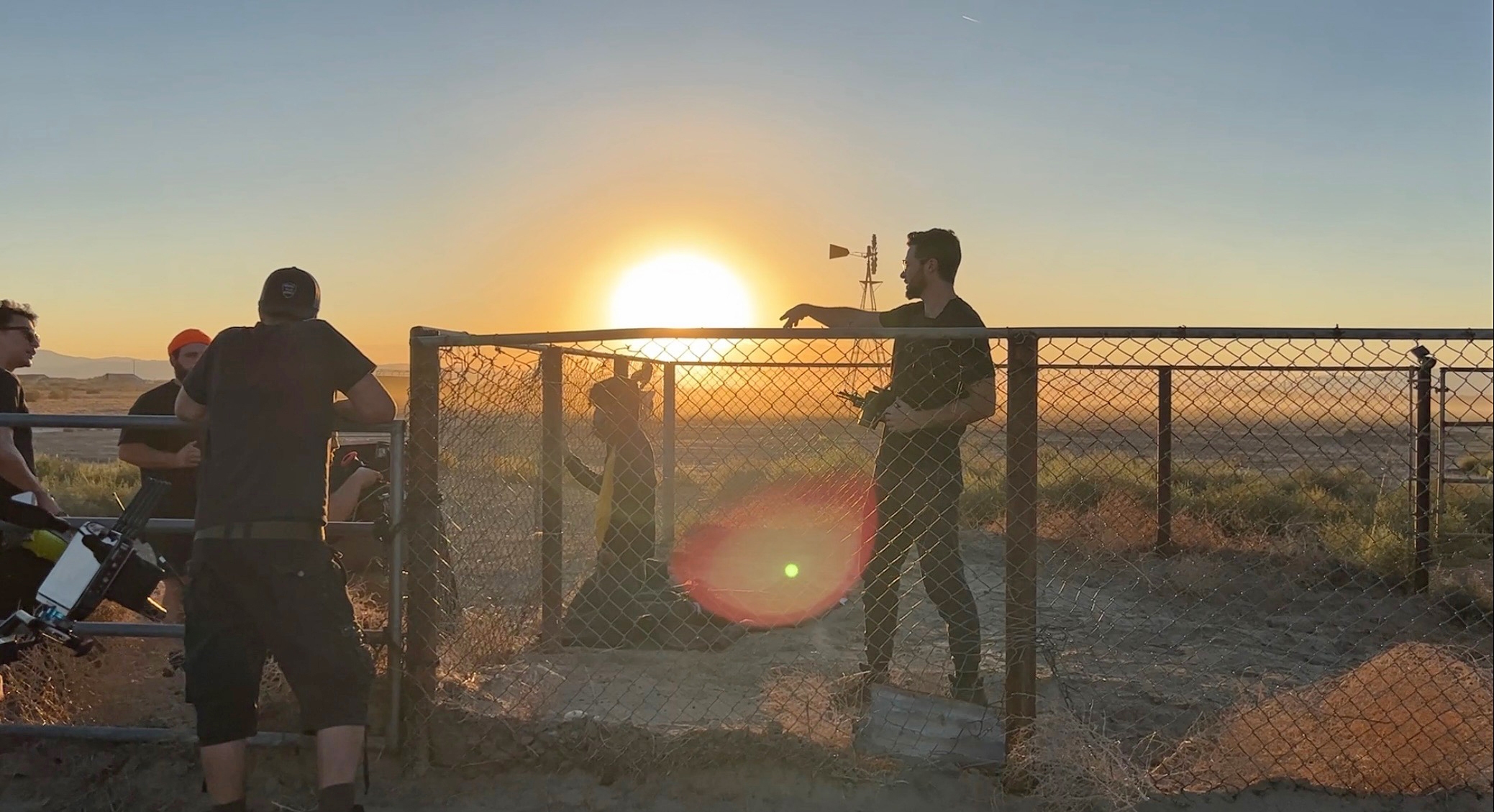
The final three episodes featured a sleek futuristic habitat in a South Korean forest and desolate future dwellings in post-apocalyptic Californian wastelands. For “Exodus,” writer-director Tyson Wade Johnston selected a location near Lancaster, in the central deserts of California, using a ramshackle 1920s farmhouse that had been abandoned in the 1940s. “It was a real farm,” says MacGregor. “As the water ran out there, they couldn’t grow any more crops — which is exactly the theme of the story that Tyson put together. It’s supposed to happen in California over the next 100 years when things go south.” Kaiju Meat Company added CG vistas of distant rocket ships.
For the high-tech forest home of “Bug,” MacGregor and filmmaker Timothy Hyten reviewed several thousand houses listed online, before arriving at a property in upper New York state that suggested near-future architecture with a sense of isolation, surrounded by trees resembling the foliage of the Southern Korean peninsula. “Tim is half-Korean,” notes Robinson. “We wanted to take a rare swing at being able to do a Korean horror movie in America.”
“Tomorrow Land” closes the series with a sardonic jab at the futuristic fate of a well-known Southern California theme park. Conceived to provide a final stinger, Robinson suggested a “doodle of an idea.” His concept: using generative A.I. to create an entirely synthetic environment. “I trained Allura and [Stability A.I.] Stable Diffusion to do royalty-free Steamboat Willie-style images,” Robinson explains. “I generated about 10,000 to 15,000 images and curated them to pick ones that looked real. I refined those in Photoshop, rebuilt them in 3D, re-rendered them, and lit the scenes. It went through a lot of processes to get rid of the ugliness and the motion of A.I. which looks like what I call ‘melted shit.’ I wanted to see if I could make something that had a bit of humor and soul that you don’t see in a lot of A.I. [-generated] imagery. I know the concerns about A.I. and, honestly, I agree with them. The purpose here was not to take work away from any artists. It was done for free, and you’re watching it for free, so nothing was lost or gained. It was an experiment to see if I could use this as a tool, and to see if you could do something funny with it.”
Since the Thousand Suns series launch, the six shorts have generated considerable online play and speculation at 22 more stories hinted at as placeholders. “Plan A was to see if a streamer was interested in picking this up and financing more episodes,” Robinson explains. “Mac spent a lot of time putting together concepts, and we have a bunch of scripts ready to go. Several of the stories feel suited to being adapted and expanded into features. So, that’s another option. And then, Plan C, maybe, if people like these, and want to hire us for other stuff, we’ll make something else or develop more. I’ve never enjoyed a shoot as much as working on this with Mac. This was pure fun, hanging out with friends, shooting amazing-looking stuff.”
